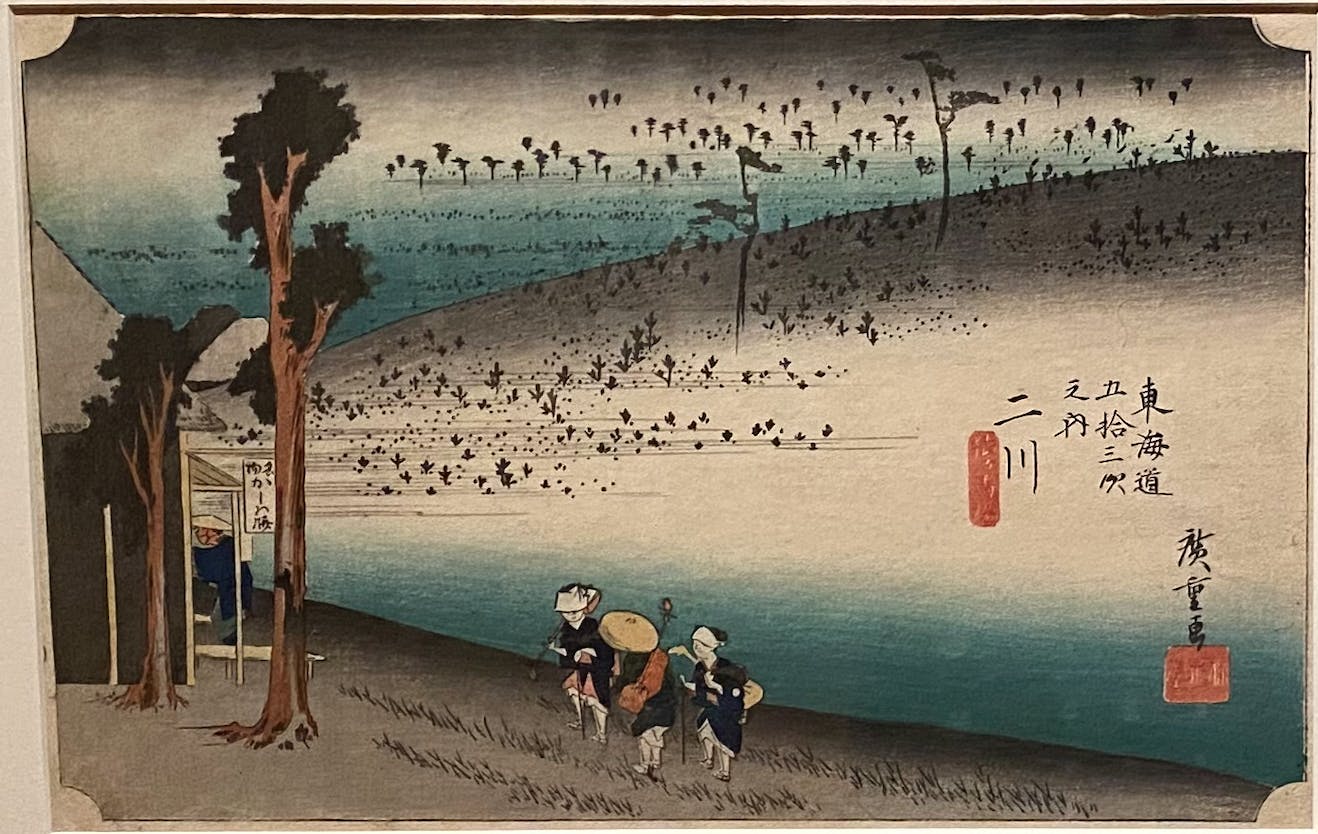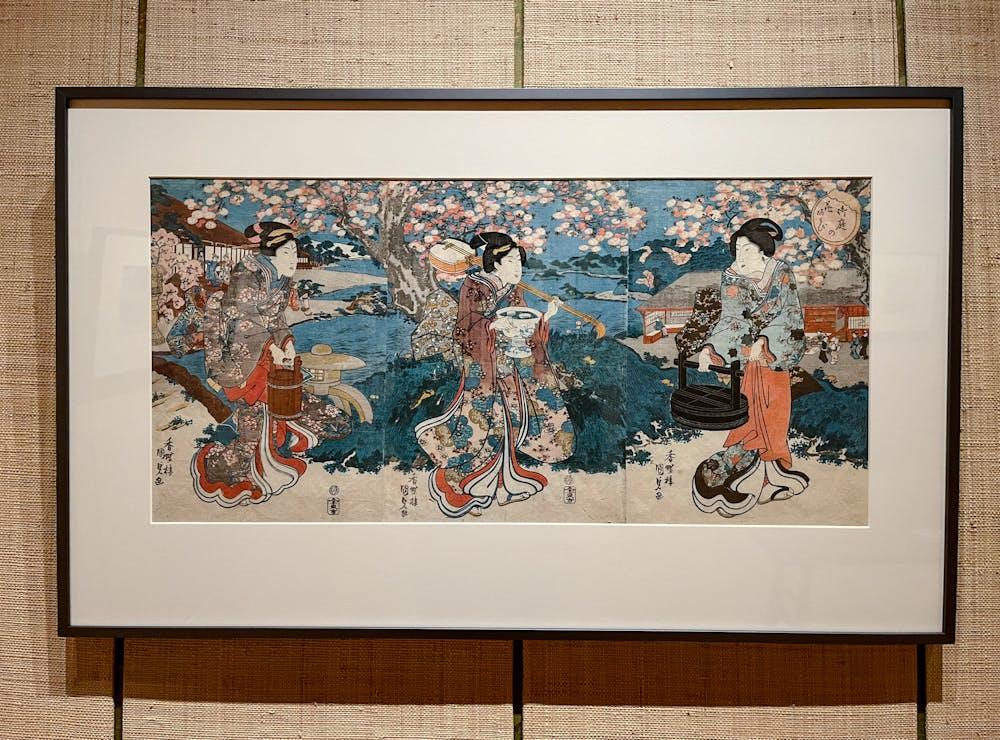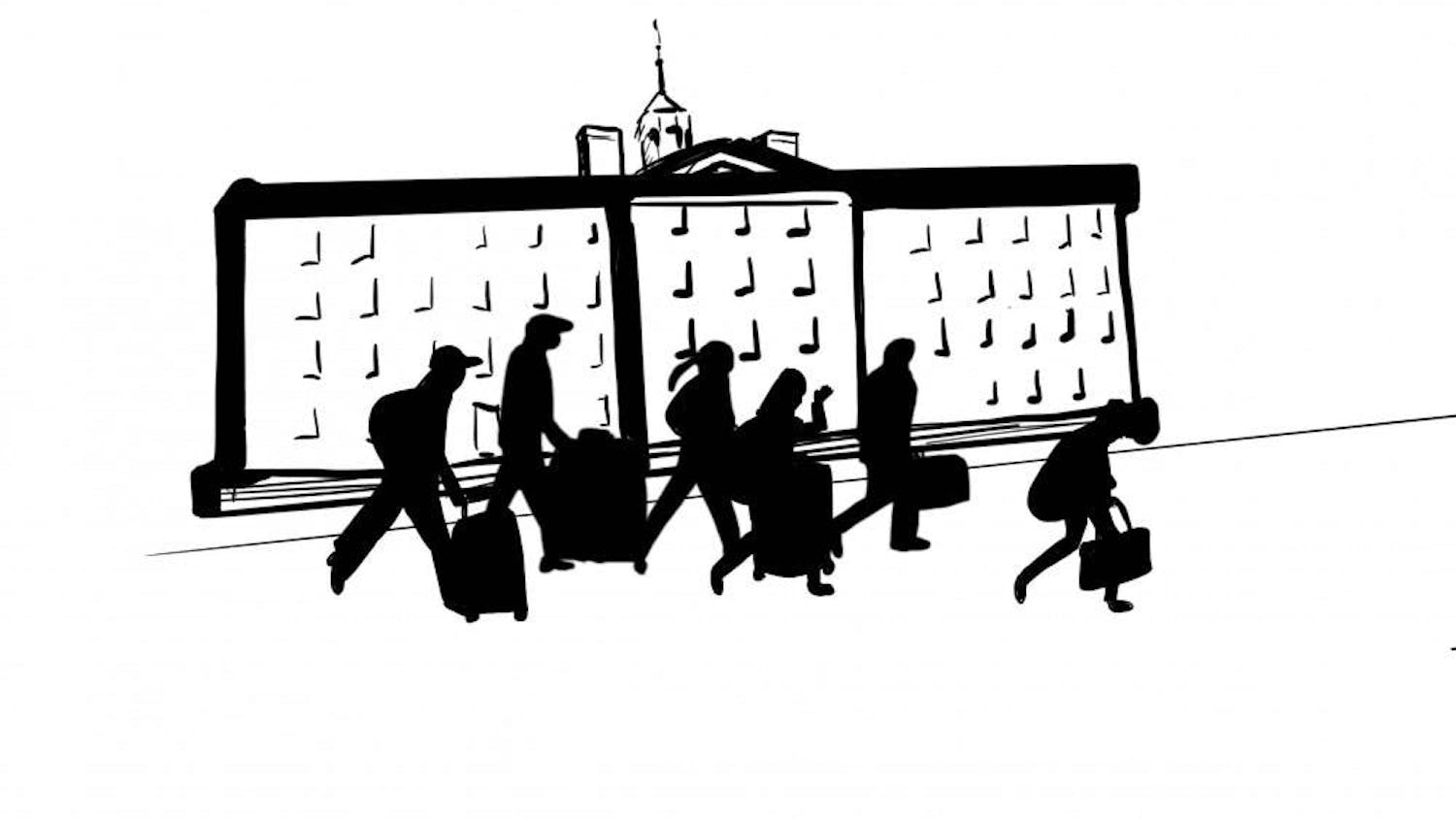Tucked inside the Rockefeller Gallery for Asian Art on the fourth floor of the Rhode Island School of Design Museum, a dimly lit room reveals 15 small Japanese woodblock prints. Opening last Friday and on view until July 31, “Striking Chords” offers a window into the lives of those living in Edo-period Japan (1603-1868), highlighting music as an integral part of their everyday leisures and cultural celebrations.
Students in the RISD Theory of Art and Design class titled “Ukiyo-e Prints” curated the show during the fall semester. Flipping through the exhibition pamphlet and its exhaustively researched essays, it felt like a glimpse into the laborious process of curation carried out by the students in the course. Stressing details such as the order of display, their analyses of the prints’ subjects demonstrate a nuanced perspective into the exhibited materials.
According to an article from the Metropolitan Museum of Art, the history of Japanese woodblock prints began in the eighth century. But it was not until the 18th century that Japanese printmaking evolved to depict kabuki actors — a form of classical Japanese theater known for ornate costumes and lively acting, landscapes of Mt. Fuji and the burgeoning urban life in Edo, which is now modern-day Tokyo.
As viewers walk through the gallery, they can resonate with the artists’ excitement while illustrating their subjects within the contemporaneous cultural environments of Edo-Japan.
Between images of blossoming spring gardens and musicians in quiet contemplation, placards provide viewers with a broader knowledge of Japanese spiritual, cultural and feudal histories. In “The Broom Tree,” the artist Utagawa Kunisada recalls the Tale of Genji, the classic 11th-century Heian period (794-1185) novel and presents music as an expression of love and desire.
One of the larger prints, “Enjoying Flowers in the Inner Garden,” is arguably the most dynamic piece with vibrant blues and warm orange tints. It depicts three women preparing to celebrate the “Hanami” Festival, or the annual Cherry Blossom Festival. In the center, the image of a woman seen carrying a shamisen — a three-stringed Japanese lute often associated with kabuki theater — allows the viewer to consider how music offers a medium to form self-conceptions and navigate experiences. Even with only a small number of pieces, the prints offer a wealth of symbols and themes to uncover. Nonetheless, a recurrent theme remains — the ponderance on the human connection with nature through musical expression.
In addition to “Enjoying Flowers in the Inner Garden,” each print reflects on the value of music differently. “Cockerel, Ivy, and Drum,” the only print focusing on an animal instead of a human subject, depicts a rooster sitting poised on a barrel drum — an allusion to peaceful, prosperous times.
Nestled on the back wall, “Futakawa: Monkey Plateau” offers a subtle presence that strongly contrasts with the loud, vibrant pieces like “Enjoying Flowers in the Inner Garden” and “Cockerel, Ivy, and Drum.” The piece depicts three goze — blind female musicians who entertained travelers — heading toward a tea house. The piece offers an intriguing illusion of depth through its rich, blue atmosphere, representing how Japanese prints collapse perspective. The woodblock print recalls the phenomenon of Japonisme, the fascination of 19th-century European artists with decorative portrayals of everyday subjects depicted in Ukiyo-e prints.

Ultimately, this exhibition emphasizes the perennial influence of Japanese printmaking techniques. For instance, a Georges Seurat drawing archived at the RISD Museum, “At the Gaîté Rochechouart,” adopts the technique of collapsed perspective.
“Striking Chords” is a thrilling journey through scenes from Edo-period Japan. Weaving through each print’s rhythmic details and vivid hues, the viewer might feel compelled to look back again and again, relishing the captivating complexity of everyday lives.





